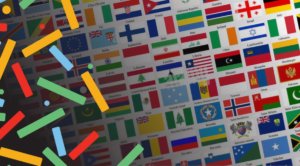
When you think of bilingual teachers, most people think of Spanish-speakers, but in our network of personalized learning schools 59% of our students are English learners, speaking 52+ different languages… Mayan languages Garifuna and Xinca, Chaldean, Filipino, Armenian, Kurdish, Hmong, Lao, Punjabi, Somali, Lahu, Khmer, Urdu and more.
While we have teachers, tutors and counselors speaking dozens of languages, with the shortage of bilingual teachers, we’re innovating in any way we can to ensure these students don’t fall behind.
Teachers use visual aids like PowerPoint, realia, videos, songs and multimedia. Students are provided translated copies of assignments in their native language and when needed, schools hire bilingual paraprofessionals and tutors.
“Often it’s impossible to find enough educators with so many languages, so we reach out to community members such as consulates, libraries, parent volunteers, churches and non-profit organizations to help translate,” said Chris Hodge, chief academic officer
Hodge points out that it is equally important to make our English learners feel comfortable and part of the school. “Too often they feel left out and are lonely, so we encourage cross-cultural peer collaboration and have all students learn about their culture and value linguistic diversity,” Hodge explained.
Our entire staff is given extra training on how to work with multilingual students – such as utilizing nonverbal communications and speaking slowly and enunciating, and they have subscription access to Rosetta Stone World Language courses.
Watch this video about our Chaldean-speaking students (religious refugees from Iraq).

